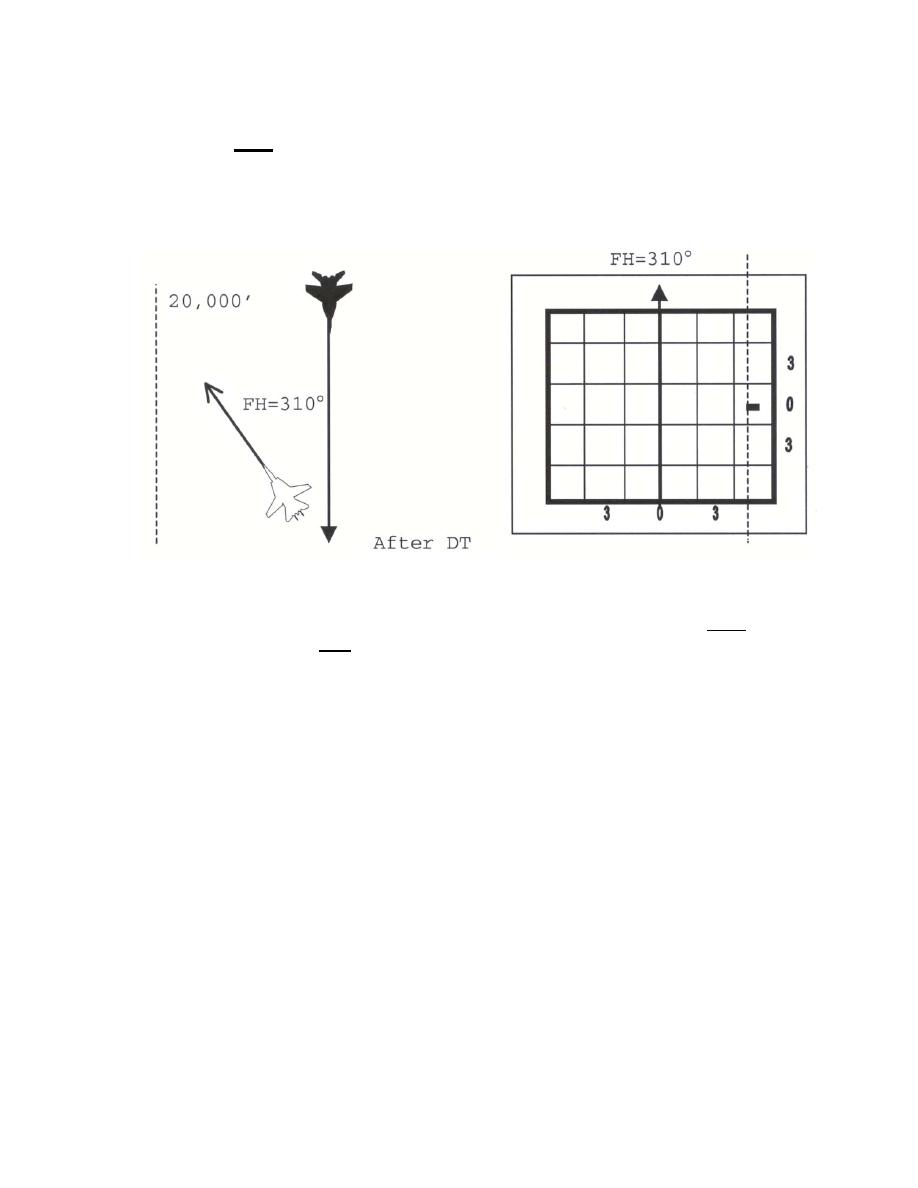 |
|||
|
|
|||
|
|
|||
| ||||||||||
|
|  INTERCEPT PROCEDURES TEXTBOOK
It must be noted that care should be taken to be accurate with TA that rounds to 0. For
example 2R TA must be displaced to 50R AO. The reason is twofold. First, on a turn to
incorrectly put 2R TA to 50L AO you would cross in front of the bogey (with a large wing
flash advertising your position). Second, based on the LD formula, you have 2000 feet of Lat
Sep on the right. A turn to put the bogey 50L AO would mean traveling 4000 feet to get where
you started (in terms of LD) had you placed the bogey to 50R AO.
Figure 10
Note that the fighter now has 230 DTG. After the DT, the fighter has a 50 cut away from
the BFP and will continue to gain lateral displacement.
Review of DT Principles
1. The displacement turn (DT) is used to gain, preserve, or slow the rate of loss of lateral
displacement.
2. The amount of lateral displacement available at any time is a function of only two things:
target aspect and slant range.
3. The amount of lateral displacement available is unaffected by the existence (or lack of) of
a collision intercept. TA and slant range will correctly orient you to the BFP.
4. The DT repositions the bogey 25 away from CB.
5. The DT is not necessarily a 50 turn. The bogey will be repositioned approximately 50
from the original AO only if the bogey was on collision bearing.
6. With aspects less than 50, right TA is displaced to the right side of the scope and left TA
to the left side.
66
|
|
Privacy Statement - Press Release - Copyright Information. - Contact Us |